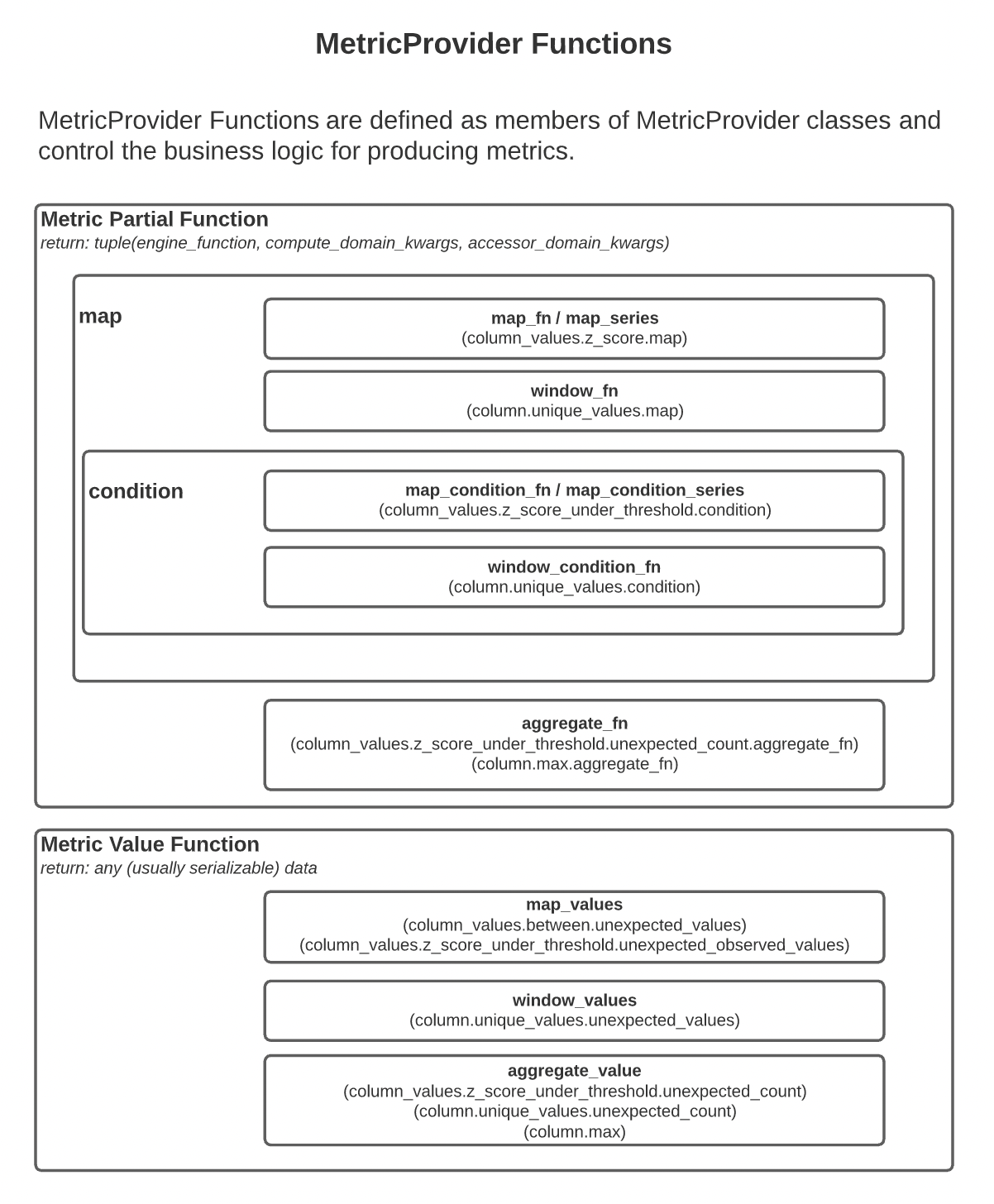Metrics
Metrics are values derived from one or more Batches that can be used to evaluate Expectations or to summarize the result of Validation. A Metric could be a statistic, such as the minimum value of the column, or a more complex object, such as a histogram.
Metrics are the core tool used to validate data. When an Expectation should be evaluated, Great Expectations collects all the Metrics requested by the Expectation and provides them to the Expectation's validation logic. The Expectation can also expose Metrics, such as the observed value of a useful statistic via an Expectation Validation Result, where Data Docs -- or other Expectations -- can use them.
Put simply, a Metric answers a question about your data posed by an Expectation.
Metrics are produced using ExecutionEngine-specific
logic that is defined in a
MetricProvider. When a MetricProvider
class is first encountered, Great Expectations will
register the metric and any methods that it defines as
able to produce Metrics.
Metrics naming conventions
Metrics can have any name. However, for the "core" Great Expectations Metrics, we use the following conventions:
-
For aggregate metrics, such as the
mean value of a column, we use describe the domain
and name of the statistic, such as
column.meanorcolumn.max. -
For map metrics, which produce
values for individual records or rows, we define the
domain using the prefix " column_values"
and use several consistent suffixes to provide
related metrics. For example, for the Metric that
defines whether specific column values fall into an
expected set, several related metrics are defined:
-
column_values.in_set.unexpected_countprovides the total number of unexpected values in the domain. -
column_values.in_set.unexpected_valuesprovides a sample of unexpected_values; "result_format" is one of its value_keys to determine how many values should be returned. -
column_values.in_set.unexpected_rowsprovides full rows for which the value in the domain column was unexpected -
column_values.in_set.unexpected_value_countsprovides a count of how many times each unexpected value occurred
-
Additionally, to facilitate optimized computation of Metrics, we use Metric Partials which define partially-parameterized functions that are necessary to build a desired Metric.
-
For aggregate metrics, we often use an
ExecutionEngine specific function with the suffix
.aggregate_fn, such ascolumn.max.aggregate_fn. -
For map metrics, to compute
column_values.in_set.unexpected_count, we will rely on a condition calledcolumn_values.in_set.condition.
Types of MetricProvider Functions
This diagram shows the relationship between different types of MetricProvider functions.

Accessing Metrics
Expectation Validation Results and Expectation Suite
Validation Results can expose metrics that are defined
by specific Expectations that have been validated,
called "Expectation Defined Metrics." To
access those values, we address the metric as a
dot-delimited string that identifies the value, such
as
expect_column_values_to_be_unique .success
or
expect_column_values_to_be_between.result.unexpected_percent. These metrics may be stored in a MetricsStore.
A metric_kwargs_id is a string
representation of the Metric Kwargs that can be used
as a database key. For simple cases, it could be
easily readable, such as column=Age, but
when there are multiple keys and values or complex
values, it will most likely be an md5 hash of
key/value pairs. It can also be None in
the case that there are no kwargs required to identify
the metric.
The following examples demonstrate how metrics are defined:
res = df.expect_column_values_to_be_in_set(
"color",
["red", "green"]
)
res.get_metric(
"expect_column_values_to_be_in_set.result.missing_count",
column="color"
)
See the How to configure a MetricsStore guide for more information.